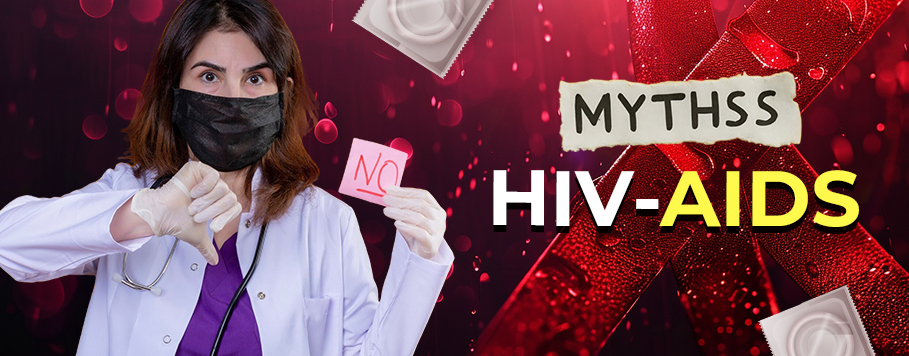HIV/AIDS is often surrounded by misconceptions that contribute to stigma and discrimination. Education plays a vital role in dispelling these myths and fostering a supportive environment for those affected. This blog aims to clarify common misconceptions about HIV/AIDS and promote a better understanding of this condition.
Dispelling Myths: The Truth About HIV/AIDS
One prevalent myth is that HIV can be transmitted through casual contact, such as hugging or sharing food. This misunderstanding creates unnecessary fear. In reality, HIV is transmitted through specific behaviors, such as unprotected sex or sharing needles. Understanding these modes of transmission is essential for informed discussions and reducing stigma.
The Reality of HIV/AIDS: Addressing Common Misconceptions
Another common misconception is that everyone with HIV will inevitably develop AIDS. With proper treatment, many people living with HIV can maintain their health and well-being for years. Effective antiretroviral therapy (ART) allows individuals to manage their condition, dispelling the myth that HIV always leads to AIDS.
Empowering Individuals: Clarifying Misleading Myths
Some believe that individuals with HIV cannot lead normal, healthy lives. This notion is untrue. Education about HIV/AIDS is crucial in countering these misleading beliefs. With effective treatment and regular medical care, individuals can achieve viral suppression and lead fulfilling lives. Empowering individuals through education helps them navigate their health journey confidently.
Myths and Realities of HIV/AIDS: Key Insights
A widespread myth is that once someone begins HIV treatment, they no longer need to practice safe sex. While effective treatment significantly reduces the risk of transmission, it does not eliminate it entirely. It remains essential to employ prevention strategies, including consistent condom use and regular testing.
Additional Myths We Address
To further clarify common misconceptions about HIV/AIDS, here are some myths we actively address:
- HIV can be transmitted through mosquito bites. This is false; HIV is not spread through insects but through specific behaviors.
- You can get HIV from kissing. While saliva does not transmit HIV, deep kissing with open wounds may pose a risk.
- You can identify someone living with HIV by their appearance. Many individuals with HIV look healthy and may not show any outward signs of the virus.
- HIV only affects certain sexual orientations. HIV can affect anyone, regardless of sexual orientation, age, or gender.
- HIV affects childbirth and fertility. With proper medical care, many people living with HIV can have healthy pregnancies and children.
- If you’re on PrEP, you don’t need to use condoms. While PrEP reduces the risk of HIV transmission, it’s still important to use condoms to protect against other STIs.
- If both partners are HIV-positive, there’s no need for condoms. Using condoms can help prevent reinfection with different strains of the virus and other STIs.
- HIV medications can cure HIV. Current treatments effectively manage the virus, but there is no cure for HIV at this time.
- You can get HIV from sharing cups and utensils. HIV cannot be transmitted through casual contact like sharing food or drinks.
- Having HIV means your life is over. With effective treatment, many people living with HIV lead long, healthy, and fulfilling lives.
- HIV is a death sentence. This myth creates unnecessary fear; with advancements in treatment, HIV is now seen as a manageable chronic condition rather than a terminal illness.
Debunking myths about HIV/AIDS is crucial for fostering an informed and compassionate society. By understanding the realities of HIV and addressing common misconceptions, we can better support those affected and create a stigma-free environment. Education is key to empowering individuals with the knowledge they need to make informed decisions about their health. Together, we can promote a healthier future for everyone
This blog article shares general information on various topics. It is not a substitute for professional advice and is intended for informational and educational purposes only.
Please use individual discretion and judgment when applying any suggestions from the blog.




